Slide Show - What is Crohn’s Disease?
Click here to take our SURVEY
Your feedback is important to us! We will use your feedback to develop future areas of content about IBD which will help other patients, caregivers and families.
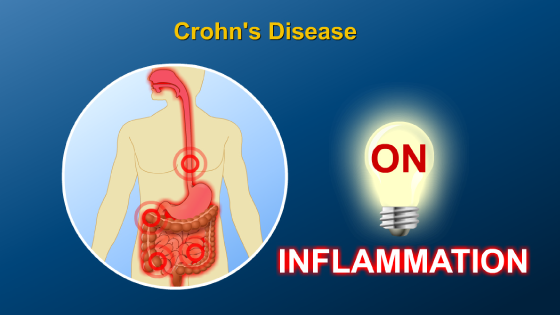
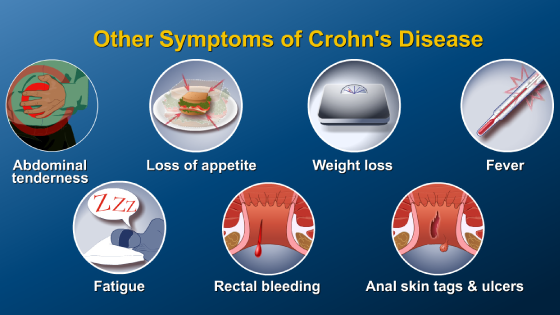
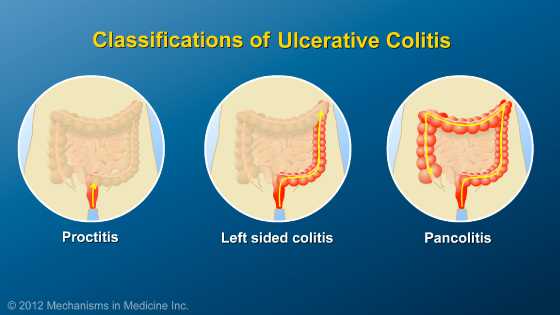
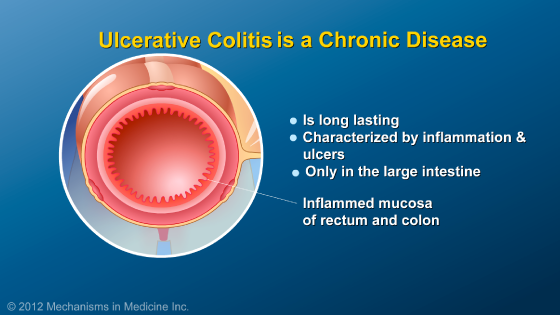
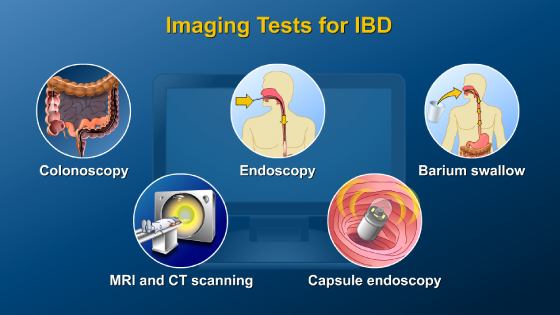
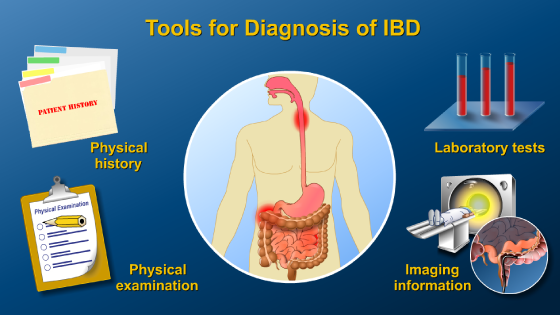
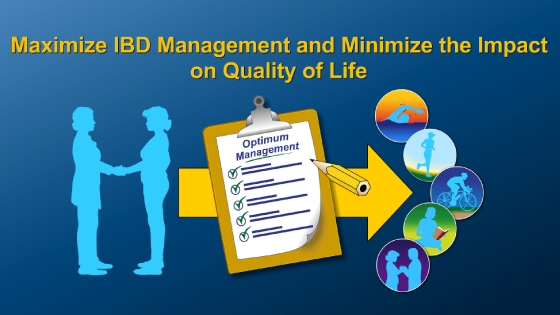
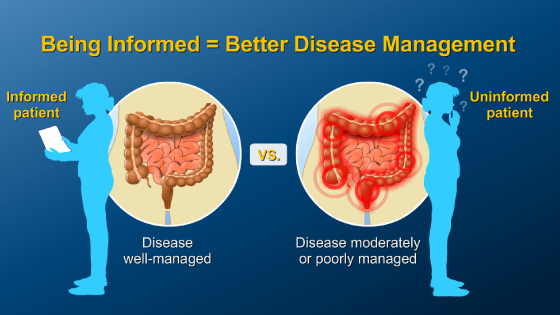
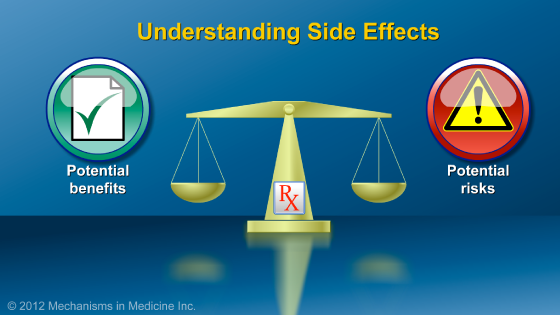
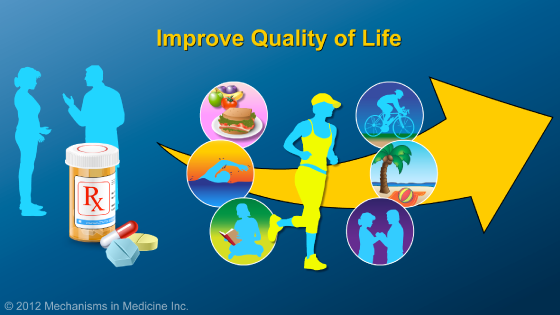
*Please note: This slide show represents a visual interpretation and is not intended to provide, nor substitute as, medical and/or clinical advice.
Crohn’s disease is a chronic condition, characterized by inflammation in the gastrointestinal (GI) tract, which is also known as the digestive tract.
Since Crohn’s disease is a chronic illness, it is persistent and will be present throughout a patient’s life. However, patients and physicians can work together to manage the symptoms of this disease.
The GI tract includes the mouth, esophagus, stomach, small intestine, large intestine and anal region.
Crohn’s disease can affect any part of the GI tract, but the most common location is the last part of the small intestine, which is called the ileum, and the first portion of the colon, which is also referred to as the large intestine.
Current thinking is that Crohn’s disease is a genetic disease caused by abnormal regulation of the immune system. The GI tract is frequently confronted with bacteria from our diet and environment.
Many factors can contribute to a person’s risk of having Crohn’s disease, but most can be thought of in three categories: genetic predisposition, environmental factors, and a dysregulated immune response in the GI tract, which causes inflammation
Environmental factors that may contribute to Crohn’s disease, include infections, smoking, and taking antibiotics or anti-inflammatory drugs known as nonsteroidal anti-inflammatory drugs (or NSAIDs).
One way that the body can protect against potential bacterial threats is with inflammation. We are familiar with how inflammation looks on the outside of the body, for example when you have a scrape or a cut.
That scrape or cut becomes red, and inflamed as a result of the immune system trying to get rid of any bacteria and viruses that are in the wound
After a few days when the immune system has finished its job, it “turns off”, so the redness and inflammation disappear.
In Crohn’s disease, inflammation (ulcers) appear within the GI tract, and the immune system works to combat the bacteria and viruses in the same way as with a cut on the surface of the skin.
However, the difference is that the immune system is not able to turn itself off after it has gotten rid of the bacteria or virus, so the ulcers remain until they are treated with medicine or surgery.
This chronic inflammation is what causes the symptoms of Crohn’s disease.
The symptoms of Crohn’s disease vary depending on where the disease is located and its severity. This means that every patient with Crohn’s disease experiences the disease differently.
Most patients with Crohn’s disease have abdominal pain and diarrhea.
Other symptoms related to the GI tract can include abdominal tenderness, loss of appetite, weight loss, fever, fatigue, rectal bleeding, anal skin tags and ulcers.
In children, Crohn’s disease may result in stunted growth and a failure to thrive, even if GI symptoms are not present.
In addition to symptoms involving the GI tract, Crohn’s disease can affect other parts of the body. Symptoms outside of the GI tract can include joint pain, liver inflammation, osteoporosis, skin problems, eye problems, mouth ulcers, and anemia.
Patients with Crohn’s disease should expect to lead normal lives in consultation with their health care providers. The goal of the healthcare provider is to help people manage Crohn’s disease, rather than having the disease manage them.
Click here to take our SURVEY
Your feedback is important to us! We will use your feedback to develop future areas of content about IBD which will help other patients, caregivers and families.










This educational activity has been developed by Imedex, LLC and Mechanisms in Medicine Inc.
Winner of the 7th Annual NAMEC Award
Best Practice in Collaboration Among CME Stakeholders
An Educational Collaborative with the
American College of Gastroenterology
This educational activity has been developed by
Imedex, LLC and Mechanisms in Medicine Inc.

This educational activity is supported by:






This website is part of the Animated Patient™ series developed by Mechanisms in Medicine Inc., to provide highly visual formats of learning for patients to improve their understanding, make informed decisions, and partner with their healthcare professionals for optimal outcomes.